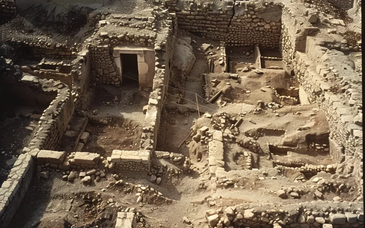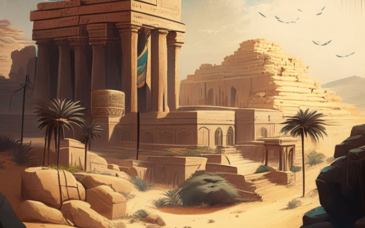
There were many realms of influence within the area of Jerusalem and the Holy Lands during the crusader period. One of these was the Mar Saba Monastery. This monastery, dedicated to Saint Sabas, was home to several hundred monks at the time of the crusades and it’s leaders were apparently on good terms and had some influence with the ruling forces in Jerusalem. It also apparently had some financial resources available as the monastery owned a number of properties in the region.
A record from the Church of the Holy Sepulcher tells of a farm owned by the Mar Saba Monastery in the Jerusalem area. The farm was reportedly sold to the monastery in either 1163 or 1164 and was known as Thora. The actual location of Thora was not recorded in the archives and it seems its whereabouts might remain a mystery forever until a recent discovery was made. Almost 900 years after the farm was purchased, the location of Thora may have been revealed in the discovery of a tiny rare artifact known as a Bulla.
Excavations taking place in 2012 near southwest Jerusalem’s Bayit VeGan quarter revealed a farmstead.
Evidence indicates the farm was first established in the Byzantine period sometime in the 5th or 6th century A.D.
It then seems to have been abandoned or fell into disrepair until it was re-established in the 11th or 12th century. This places the farm in use during the crusader period and in the proper location to be the missing Thora. To confirm its identity however, more physical proof would be required.
During excavations at the farm archaeologists discovered a tiny bulla or seal from the crusader period. On the seal is the image of Saint Sabas wearing a toga and holding a cross. Some speculate the image also depicts the saint holding a copy of the gospel, but this cannot be confirmed. On the reverse side of the seal is a Greek inscription. When translated the inscription confirms the identity of the person on the seal as well as the seal’s origin. The inscription reads, “This is the seal of the Laura of the Holy Sabas.” (Laura is an Orthodox Christian Monastery which is usually associated with a group of caves where monks would live.) This obviously referred to the Mar Saba Monastery.

The seal would have been used to secure an envelope or other document. If the document were to be opened it would result in visible damage to the seal, thus making it obvious the document or letter had been opened. The purpose was to discourage the unauthorized opening and viewing of the document by someone other than its intended recipient. This is considered an extremely rare and unusual discovery. Interestingly, since the seal was located on a farm it raises the possibility of the farm being the mysterious Thora. While it is possible there is no connection between the seal and Thora, some experts believe it is a strong indication the farm being excavated is indeed the farm owned by Mar Saba Monastery mentioned in the archives. It is believed the seal was used on a letter or document sent from the Mar Saba monastery to someone in authority at Thora. The document was important or sensitive enough to require a seal for its security.
The seal/bulla was recovered in 2012 but was not made public until May 27th of this year. Delays of this type are not unusual as artifacts must be cleaned and evaluated prior to the release of information or speculation concerning their origin or importance. The excavations were overseen by Benyamin Storchan and Benyamin Dolinka, both of whom are with the Israel Antiquity Authority (IAA). As of this writing there was no word on where or when the artifact will be put on display.




